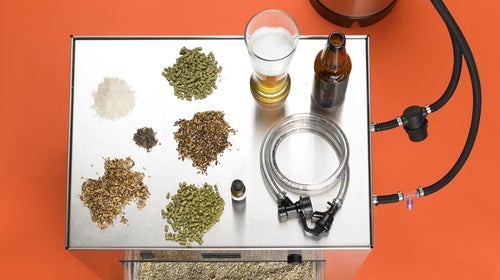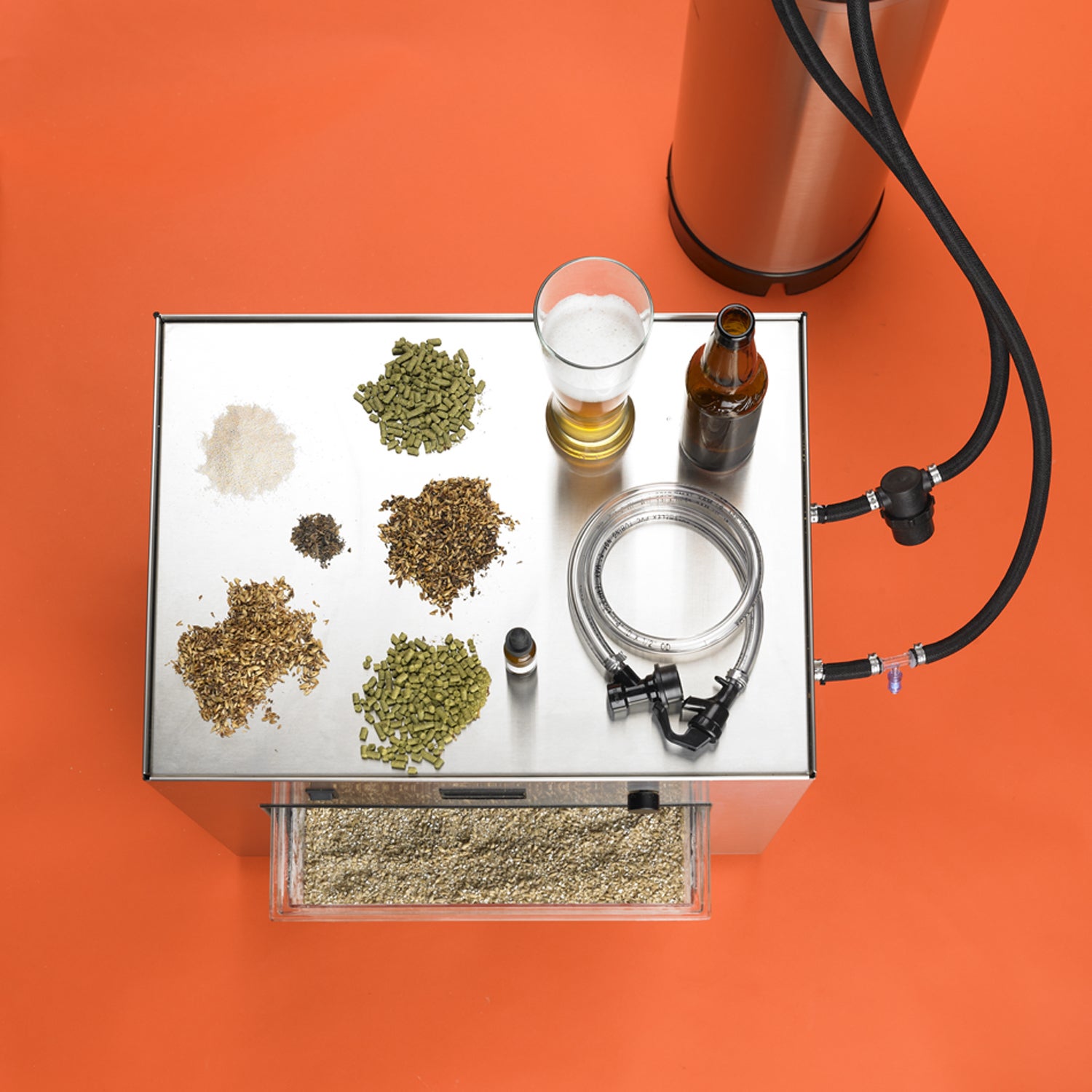There are two main methods of home brewing: all-grain (making beer from malted grains) and extract (skipping some steps by using a pre-made��malt extract). Think of it as��the difference between instant mashed potatoes and making them from scratch—you can get decent results with both, but there’s a reason Grandma doesn’t use flakes from a box on Thanksgiving. Still, many of the 1.2 million Americans brewing their own beer have never moved beyond using the extract method for their beers, because all-grain requires more equipment, time, and knowledge of the brewing process.��
Enter the ($2,000), which is billed as the world’s first “fully automatic all-grain brewing machine.” It’s a microwave-sized apparatus designed by Bill Mitchell, a former Microsoft executive, and his brother��Jim Mitchell, a food chemist, to handle all of the precisely-timed steps of the brewing process, which��takes��human error out of the equation. “We wanted to make the process more automated, more precise, and more repeatable,” says Bill. So they made it simple: Users select a recipe from PicoBrew’s database (or enter their own), add ingredients, and press start. ��
When we first wrote about the Zymatic last year, I was stoked. A machine that’s going to make home��brewing easier and vastly improve our beer? Sign me up. So I called the folks at PicoBrew and begged for a tester unit. I’ve been putting it to through the wringer��for more than five months, producing a half dozen brews. You probably want to know whether I’d recommend this for beginner brewers. There’s a lot to unpack. Let’s dive in.��
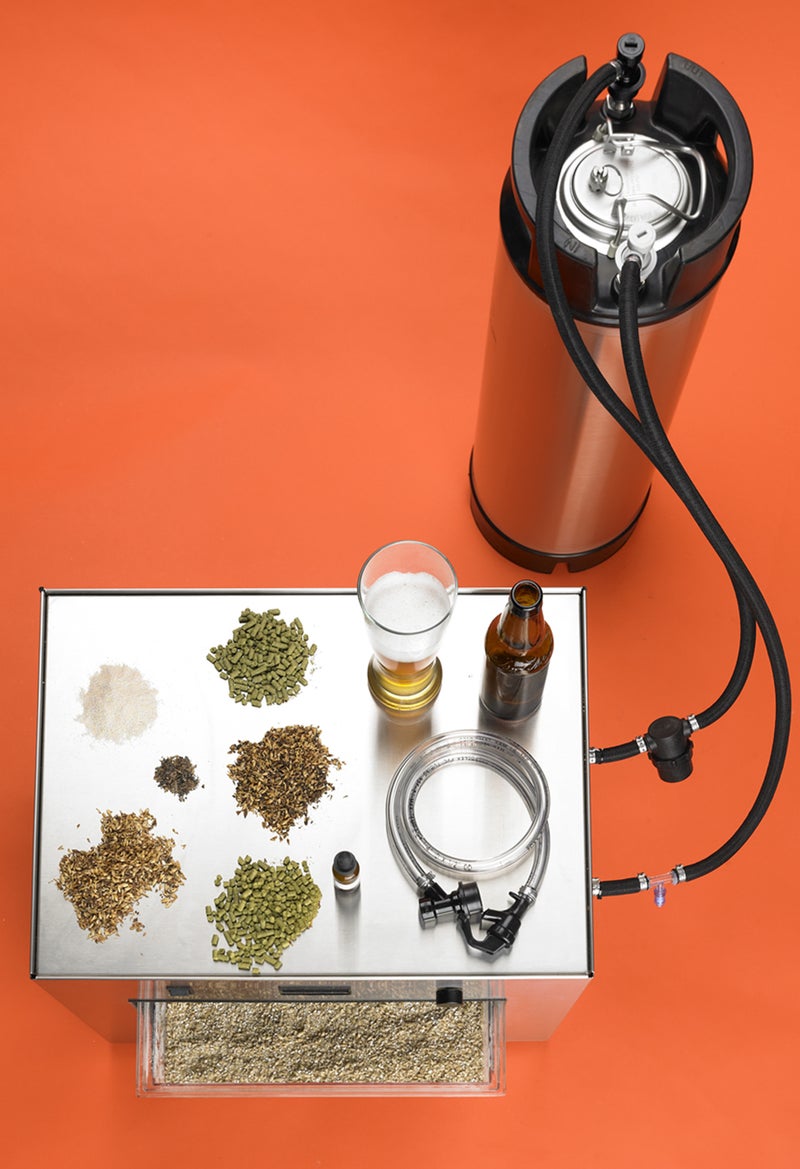
About That Price
Before we get into the details, the big question: Why would anyone in their right mind spend $2,000��on what’s essentially a bread machine for beer?��In this regard, serious��home brewers��are��not unlike coffee snobs who willingly drop thousands on fancy espresso machines for the perfect shot.��Most people who get into the hobby go one of two ways: They either brew a few extract batches and completely lose interest, or they become completely obsessed, turning spare rooms into home-breweries and dreaming about becoming the next .��Those��brewers��move into all-grain brewing because they can get better flavor and have more control, and it’s how the pros do it. A very entry level traditional ��will run somewhere in the neighborhood of $500, and can easily cost upwards of $5,000 for the . At that point, $2,000 for a machine that promises to automate and simplify the process��seems pretty��reasonable.
If you're more of a serious beer drinker than a brewer, it could still be worth looking into a setup like this. Find yourself buying six-packs of specialty beer��every week or so? That quickly adds up to way more than the cost of a PicoBrew. Whatever you need to tell yourself to justify your ongoing craft obsession.
Claim 1: Ease of Use
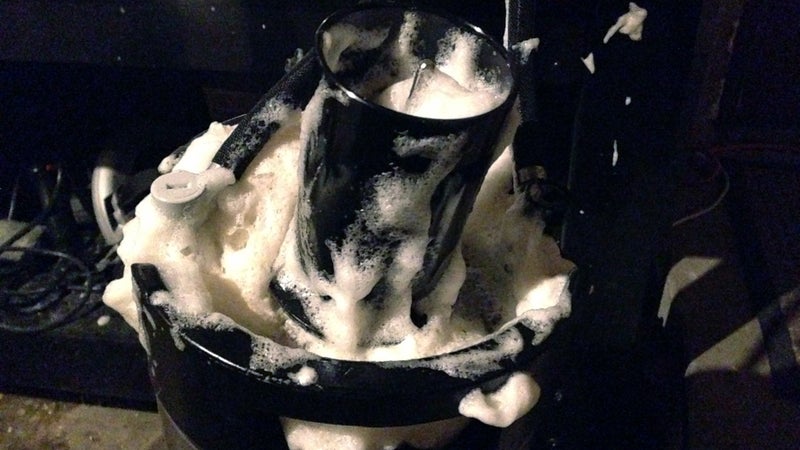
One of the coolest things about the Zymatic is that it uses WiFi to instantly beam its progress and temperature readings into PicoBrew’s online database, so I could step away and monitor my brew from a computer or phone. Also nice: You can also see what other “PicoBrewers” around the country are working on.��
But cool features sour quickly if they’re not dependable. The machine lost signal once during a brew, and since the machine relies on an Internet connection to function, I had to manually reset it to get things going again. I also had problems with excessive foaming—out of the keg, during the cooling process—in five out of six brews.��
If you can get past the foaming issues, the Zymatic does cut down on overall cleaning time. I liked being able to throw big components like the hop baskets and step filter in the dishwasher at the end of the day, too.
Bottom line:��A machine that purports high levels of automation shouldn’t require babysitting to avoid a massive mess.
Claim 2: Faster Brewing
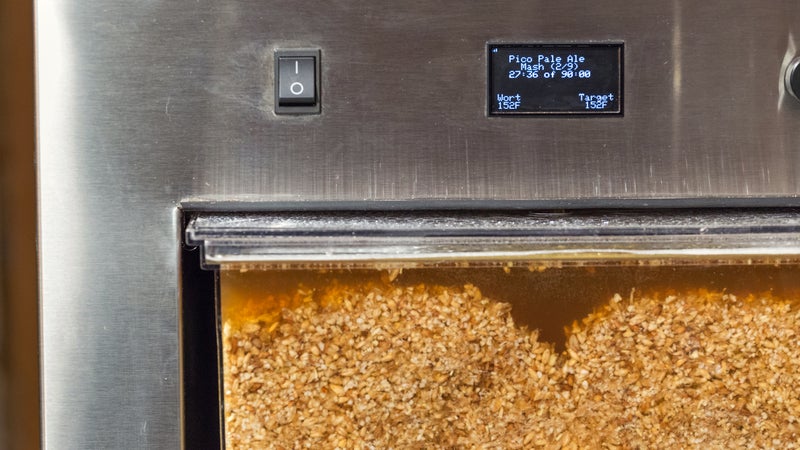
It took me over five hours to brew five of the beers, which is longer than PicoBrew’s claimed four-hour average brew time and longer than some other all-grain methods. This was mainly due to three things: it took the PicoBrew over an hour to heat room-temperature water to mash temp (around 150 degrees); it took almost an hour to chill the wort from boil temps down to 70 degrees; and the default mash duration is 90 minutes. Also, cooling required a large bucket and several bags of ice and took a lot longer than it should have.
Bottom line: You’re not really saving any time when you brew with the Zymatic—which is only a deal��breaker if the beer isn’t any better. Which brings me to…��
Claim 3: Taste Improvement and Repeatability
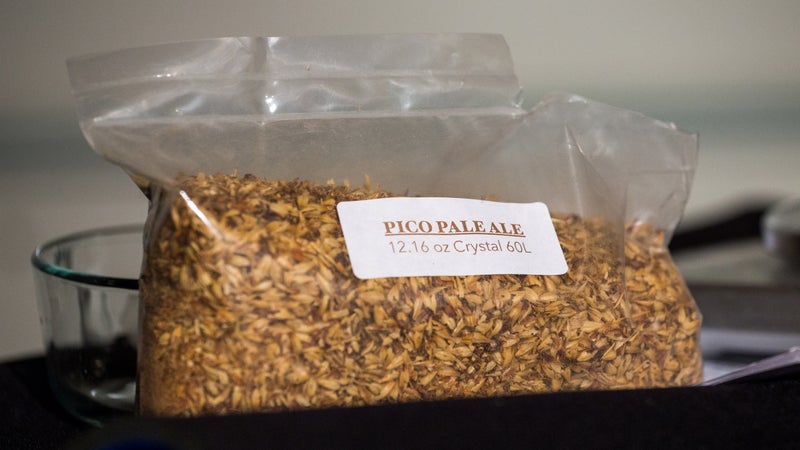
Taste is paramount. I brewed two of PicoBrew’s recipes (Party Porter and Pico Pale Ale), three from an ��(an amber ale, IPA, and saison), and one of my own (a porter). Here’s how they turned out:
The IPA was undrinkable—we nicknamed it Swamp Boot. The Party Porter came out off-flavor, wasn’t full-bodied, and didn’t taste like a porter. The amber wasn’t balanced. The Pico Pale turned out malty and thin without a lot of hop character. The saison, however, came out floral and flavorful—it tasted like a saison should taste. The porter from my recipe came out okay,��but dulled—not even close to the one��I’d brewed it myself.
Part of this can likely be attributed to time spent with the Zymatic, figuring out its quirks and adjusting settings—things like boiling temperature and the amount of water needed. Part of it can also to be attributed to the weird world of home��brewing, where tons of variables conspire against you to create strange off flavors when you least expect it.��
But that’s what the Zymatic promised to curtail, and to put it simply, it��didn’t. My other big��gripe: a lack of regard for fermentation. Fermentation temperatures play a huge role in the outcome of a beer, and the Zymatic leaves you on your own for the whole process.
Bottom line: We shouldn’t have had such varying degrees of success with each brew; every beer should have hit the software’s estimated original gravity (which didn’t happen); and we should have been able to “set it and forget it” rather than constantly feeling the need to babysit it.
The Verdict
PicoBrew definitely has the��cool factor going for it, and the idea to integrate an online community is fantastic. But despite the marketing, this isn’t a device for the novice brewer or for someone who wants a fully automated system. It’s an advanced system that requires quite a bit of user input and attention. Another limiting factor worth mentioning: You can only brew 2.5 gallons, or about one case, of beer with the Zymatic at a time.
PicoBrew is a good option for someone with space constraints and a firm understanding of the brewing process. For everyone else, there’s probably a better option,��like the new-school method (BIAB), which��features a ��with��the same benefits as traditional all-grain brewing.
